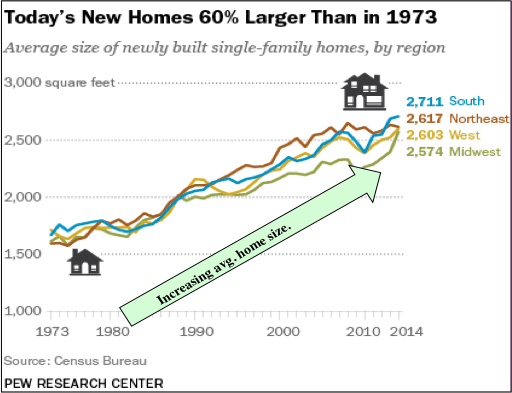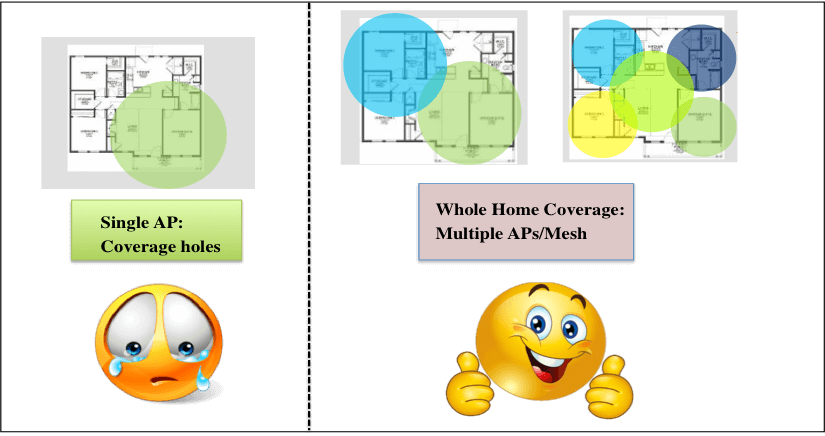Consumer
AP Coordination in Home Networks


Multiple Access Points Can Improve Home Wi-Fi Coverage: The Secret Sauce is AP Coordination
Before we address AP Co-ordination in Home Networks, it is important to note that average home sizes have been increasing at a steady pace in the past four decades as seen from the figure below.
Increasing Home Size
As consumers, we expect our home Wi-Fi network to be ubiquitous, providing reliable connection speeds wherever we are in the home. A single AP may not be capable of providing whole home coverage, especially in larger sized homes. In a recent blog post, my colleague Vikas Sarawat described how a range of multi-access point architectures have emerged to solve this coverage gap. These architectures solve the whole home coverage problems but there are other gaps that need to be addressed in order to have an overall positive Wi-Fi experience.
Single AP vs. Multiple AP Architecture
For example, most consumer grade access point solutions currently lack a centralized Wireless LAN controller (WLC). In general, a WLC acts as a commander-in-chief which manages and controls all the APs that it serves and thereby leads to network optimization.
In the absence of a centralized WLC, multiple APs do not communicate with each other. In fact, they can at times treat each other as rogue APs that are not even operating on the same network.
Hence, there needs to be some sort of a direct communication protocol between these multiple APs in-order to provide a good Wi-Fi experience to the consumers. Although AP co-ordination has been a topic of research in a controller-based architecture ecosystem (e.g., for enterprise and community Wi-Fi environments) for some years, historically, the residential consumer premise equipment vendors have not paid much attention to coordination since most homes only had a single AP. To address this shortcoming, CableLabs is actively working on defining and standardizing the AP coordination protocols.
Our goal is to have a lightweight AP co-ordination solution that provides the following two benefits:
Optimal AP selection: When there are multiple APs available, many clients rely solely on signal strength to decide which AP to connect to, but it might not always be optimal concerning throughput for the client.
There are often conditions where a lower received signal strength indicator (RSSI) from the gateway AP may provide better throughput than a stronger RSSI from the repeater. The client cannot determine which is the best connection on its own – the infrastructure must inform it. Choosing the best point of attachment in each location is a decision that warrants information and intelligence on the client-side, the network-side, or possibly both.
Client Steering: APs also need to decide when and how to steer clients to the best AP based on network conditions (e.g., load, bands). This is especially important since many clients prefer to stay associated with one Wi-Fi network even though another Wi-Fi network with “better” connectivity is available. This is commonly referred to as the "sticky client" issue.
With AP co-ordination, the APs can exchange information on how best to get rid of the sticky client problem in a standard fashion. A partial solution has been defined in the IEEE 802.11k and 802.11v standard but not many APs or clients implement them yet.
While the IEEE 802.11k defines methods of retrieving information from clients in the form of neighbor requests and reports, the IEEE 802.11v standard provides the AP with the ability to configure client stations wirelessly in the form of the BSS Transition Management (BTM) feature.
To summarize, AP coordination is an important topic of research, particularly within the home networks where there is no WLC. CableLabs is actively engaging with the vendor community to develop a standard way of implementing in-home AP coordination protocols which we plan on submitting to the standards bodies such as WFA and WBA in the near future.



